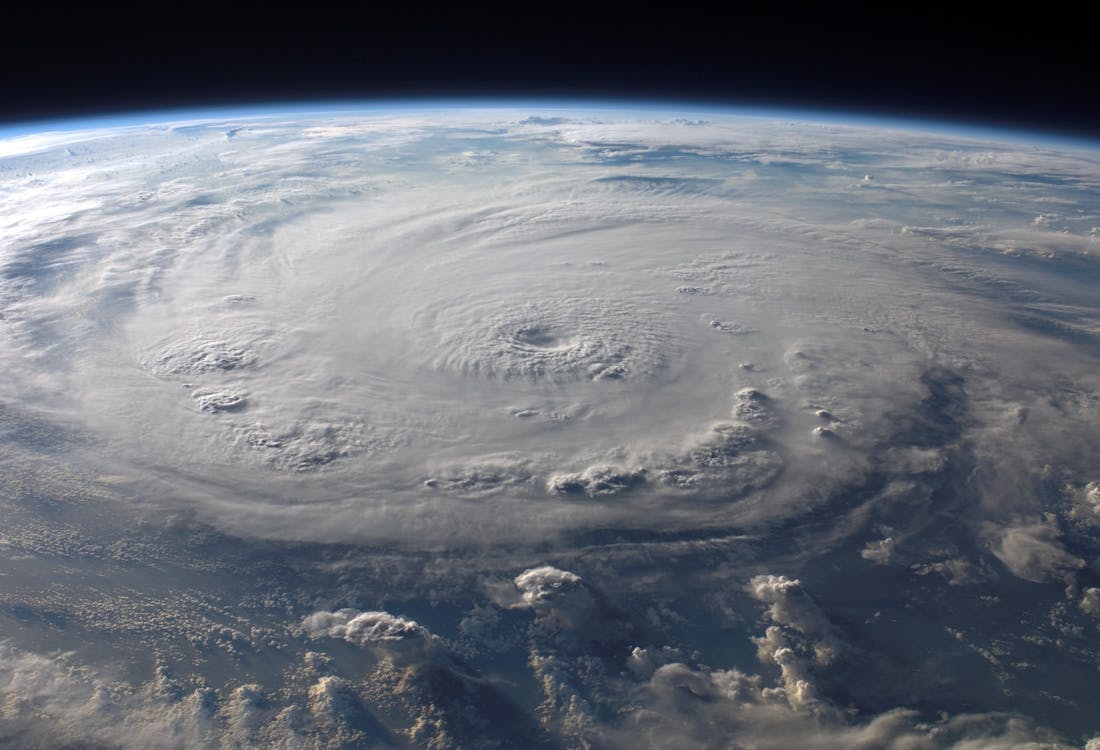Table of Contents
- Unleashing Physical Prowess: More Than Just Running Around
- Fueling Young Minds: Cognitive Growth in the Wild
- Nurturing Hearts and Minds: Social-Emotional Growth
- Forging a Bond: Connecting with the Natural World
- Making it Happen: Practical Tips for More Outdoor Play
- Overcoming the Hurdles: Addressing Common Concerns
- The Great Outdoors Imperative: A Call to Action
Get Them Outside! Why Outdoor Play is Non-Negotiable for Your Child’s Development
Remember those long summer afternoons? The feel of grass tickling your bare feet, the thrill of climbing just a little higher in that old oak tree, the endless possibilities contained within a simple mud puddle? For many of us, these memories are synonymous with childhood. But in today’s fast-paced, screen-saturated world, are we unintentionally robbing our children of these vital experiences? Outdoor play isn’t just about letting off steam; it’s a fundamental building block for a healthy, happy, and well-rounded child. It’s where crucial learning happens, resilience is built, and a lifelong connection with the natural world is forged. While indoor activities and digital learning have their place, they simply cannot replicate the rich tapestry of benefits that unfettered time spent outdoors provides.
We’re seeing a concerning trend: children are spending significantly less time outdoors than previous generations. Packed schedules, safety concerns (some real, some perceived), and the ever-present lure of screens have conspired to keep kids inside. But the consequences of this shift are becoming increasingly clear, impacting everything from physical health to mental well-being and cognitive abilities. It’s time we reclaimed the outdoors for our children, understanding that it’s not a luxury, but a necessity for their optimal child development. Let’s dive deep into the incredible, science-backed reasons why pushing open that back door is one of the best things you can do for your kids.

Unleashing Physical Prowess: More Than Just Running Around
When we think of kids playing outside, the most obvious benefit that comes to mind is physical activity. And yes, that’s huge! But the physical advantages go far beyond simply burning calories. The varied, unpredictable terrain and boundless space of the outdoors provide a unique gymnasium for developing a wide range of physical skills.
Building Strong Bodies: Gross Motor Skills Galore
Running across uneven ground, jumping over puddles, climbing trees or playground structures, throwing balls, balancing on logs – these activities are fundamental for developing gross motor skills. These are the large muscle movements that involve the arms, legs, and torso. Unlike the predictable surfaces indoors, the outdoors constantly challenges a child’s balance, coordination, and strength. Think about it:
- Running on grass vs. a flat floor: Requires constant micro-adjustments for balance.
- Climbing a tree vs. stairs: Involves complex coordination, strength, and spatial awareness.
- Navigating obstacles: Builds agility and reaction time.
This physical competence builds confidence and encourages a lifelong love of movement, setting the stage for a healthier adulthood.
The Finer Details: Developing Fine Motor Skills Naturally
It might seem counterintuitive, but the great outdoors is also fantastic for honing fine motor skills. These smaller, more precise movements involving the hands and fingers are developed through activities like:
- Picking up small pebbles, leaves, or seeds.
- Digging in the dirt or sand with fingers or small tools.
- Tearing leaves or pulling petals (gentle exploration, of course!).
- Drawing in the dirt with a stick.
- Trying to tie knots with blades of grass.
These seemingly simple actions build hand-eye coordination, finger strength, and dexterity – skills crucial for later tasks like writing, buttoning clothes, and using tools.
A Feast for the Senses: Rich Sensory Input
The outdoors is a sensory wonderland! Unlike the often sterile indoor environment, nature bombards children with a rich variety of sights, sounds, smells, textures, and even tastes (within safe limits!). Feeling the rough bark of a tree, the squish of mud between toes, the warmth of the sun, the coolness of a breeze; hearing birdsong, rustling leaves, buzzing insects; seeing the vibrant colours of flowers, the intricate patterns of a spiderweb, the vastness of the sky – this constant stream of sensory information is vital for brain development. It helps children integrate sensory input, understand their world, and develop their sensory processing capabilities, which can be particularly beneficial for children with sensory processing disorders.
Sunshine Power: Vitamin D and Healthy Growth
Our bodies synthesise Vitamin D when skin is exposed to sunlight. This essential vitamin plays a crucial role in calcium absorption, which is vital for building strong bones and teeth. With children spending more time indoors, Vitamin D deficiency is becoming more common. Regular, safe sun exposure (think early mornings or late afternoons, and appropriate protection during peak hours) through outdoor play is the most natural way to ensure adequate levels, promoting healthy skeletal development.
Eyes on the Horizon: Protecting Vision Health
Research increasingly links increased time spent outdoors with a lower risk of developing myopia (nearsightedness) in children. While the exact mechanisms are still being studied, theories suggest that exposure to natural light and the need to focus on distant objects outdoors play protective roles. Encouraging kids to look up from screens and gaze across a park or field might be doing more for their long-term eye health than we realise.
Fueling Young Minds: Cognitive Growth in the Wild
The benefits of playing outside extend deep into cognitive development. The unstructured, dynamic nature of the outdoors provides endless opportunities for learning, problem-solving, and sparking creativity in ways that structured indoor activities often can’t match.

Natural Problem Solvers and Critical Thinkers
How do I get across this stream without getting wet? How can we build a den using these branches? What happens if I roll this log down the hill? The outdoors is a natural laboratory for problem-solving. Children encounter real-world challenges that require them to think critically, experiment with solutions, assess risks, and adapt their plans. Negotiating uneven terrain, figuring out how to climb something, or deciding how to share a limited resource (like a swing) all contribute to developing essential executive function skills.
Imagination Takes Flight: Fostering Creativity
A stick can be a sword, a wand, a horse, or a tool for drawing in the sand. A pile of leaves can become a cozy nest or ingredients for a pretend soup. Unlike toys with predetermined functions, natural ‘loose parts’ invite open-ended play and fuel boundless imagination. The lack of prescribed rules or structures encourages children to invent their own games, stories, and scenarios, fostering creativity and divergent thinking – the ability to generate multiple solutions to a problem.
Nature’s Focus Booster: Improving Attention
Studies suggest that spending time in nature can help improve attention spans and reduce symptoms of Attention-Deficit/Hyperactivity Disorder (ADHD) in children. The natural environment seems to have a restorative effect on the brain, allowing for recovery from attentional fatigue often caused by the constant stimulation of indoor or urban environments. The calming sounds, natural patterns, and open spaces can help children regulate their attention and improve focus both during and after outdoor time.
Little Scientists: Cultivating Curiosity and Learning
Why do leaves change colour? Where do squirrels hide their nuts? What made that footprint? The outdoors is a living classroom, sparking curiosity and encouraging scientific thinking. Children naturally observe, question, and experiment when exploring nature. They learn about life cycles by watching tadpoles turn into frogs, understand basic physics by throwing stones into water, and discover ecological concepts by observing ants at work. This hands-on, experiential learning makes abstract concepts tangible and fosters a genuine love for discovery.
Expanding Vocabulary: Language Development Outdoors
The rich sensory environment of the outdoors naturally prompts language development. Children encounter new objects, creatures, and phenomena that they want to name and describe. Adults can foster this by engaging children in conversation: “Look at that fluffy cloud!” “How does that moss feel?” “Can you hear the woodpecker?” Describing their actions, negotiating play with peers, and telling stories inspired by their surroundings all contribute to a richer vocabulary and better communication skills.
Nurturing Hearts and Minds: Social-Emotional Growth
Perhaps some of the most profound benefits of outdoor play lie in the realm of social and emotional development. Navigating the social dynamics of group play and overcoming physical challenges outdoors builds crucial life skills and emotional resilience.

Learning to Play Well Together: Cooperation and Negotiation
Whether it’s deciding the rules for a game of tag, sharing space on the swings, or working together to build a fort, outdoor play provides countless opportunities for children to practice cooperation, sharing, turn-taking, and negotiation. These unstructured social interactions are essential for learning how to navigate group dynamics, understand different perspectives, and build positive relationships with peers. They learn to communicate their needs, listen to others, and find compromises – vital skills for success in school and life.
Resolving Differences: Conflict Resolution Skills
Disagreements are inevitable when children play together. The outdoor setting, often less supervised than indoor environments, allows children more space to try and resolve conflicts themselves. They might argue over who gets to use the bucket first or whose turn it is to slide, providing real-time opportunities to practice communication, compromise, and managing frustration. While adult guidance is sometimes needed, allowing children the space to work through minor disagreements builds valuable conflict resolution skills.
Stepping into Others’ Shoes: Developing Empathy
Playing together outdoors helps children develop empathy. Seeing a friend fall and scrape their knee, helping someone who’s struggling to climb, or sharing a snack with someone who forgot theirs – these experiences foster compassion and understanding of others’ feelings. Collaborative play encourages children to consider others’ perspectives and needs, laying the foundation for empathetic relationships.
“I Did It!”: Building Independence and Confidence
Successfully climbing a challenging structure, balancing on a tricky log, or navigating a path independently gives children a powerful sense of accomplishment. Outdoor play offers numerous opportunities for children to test their limits, take reasonable risks, and master new skills. This process builds self-confidence, resilience, and a belief in their own capabilities. Granting children increasing independence in outdoor settings fosters self-reliance and decision-making skills.
Nature’s Therapy: Reducing Stress and Improving Mood
Spending time in nature has well-documented stress-reducing effects. The combination of physical activity, fresh air, sunlight, and the calming influence of natural surroundings can significantly improve mood and lower anxiety levels in children (and adults!). It provides an escape from the pressures of school or structured activities, allowing children to decompress, regulate their emotions, and simply *be*. For children experiencing stress or anxiety, regular time outdoors can be a powerful therapeutic tool.
Smart Risks: Learning Risk Assessment
While safety is paramount, allowing children to engage in appropriate risk-taking during outdoor play is crucial for development. Climbing, balancing, running fast – these activities involve a degree of risk. By navigating these challenges, children learn to assess situations, understand their own physical limits, make judgments, and cope with minor setbacks (like a small tumble). Over-sanitizing play environments removes these valuable learning opportunities. Supervised, age-appropriate risk-taking helps children develop good judgment and resilience, ultimately making them safer in the long run.
Forging a Bond: Connecting with the Natural World
Beyond the immediate developmental benefits, regular outdoor play fosters a deep and lasting connection with nature. This bond has far-reaching implications for both the child and the planet.

Future Caretakers: Environmental Stewardship
Children who spend time in nature, who feel the mud, watch the insects, and marvel at the trees, are more likely to develop an appreciation and respect for the environment. Direct, positive experiences in the natural world are the foundation for environmental consciousness. You can’t expect someone to protect something they don’t know or care about. Outdoor play cultivates a sense of wonder and connection that can inspire future generations to become responsible stewards of the planet.
A Sense of Wonder and Belonging
Nature inspires awe and wonder. Watching a sunset, discovering a bird’s nest, or simply lying on the grass looking at the clouds can foster a sense of perspective and connection to something larger than oneself. This connection to the natural world can provide comfort, grounding, and a sense of belonging that is deeply beneficial for emotional well-being throughout life.
Making it Happen: Practical Tips for More Outdoor Play
Okay, the benefits are clear. But how do we realistically incorporate more outdoor play into our busy lives? It doesn’t have to be complicated!
- Prioritize and Schedule It: Treat outdoor time like any other important appointment. Put it on the calendar, even if it’s just 30 minutes in the backyard after school. Consistency is key.
- Start Simple: You don’t need elaborate plans or expensive gear. A walk around the block, playing in the backyard, visiting a local park – it all counts.
- Dress for Success (and Mess!): Invest in weather-appropriate gear (rain boots, waterproofs, sun hats). Let go of worries about dirt – getting messy is part of the fun and learning. Keep spare clothes handy.
- Explore Diverse Environments: Mix it up! Visit parks, forests, beaches, nature trails, or even just different parts of your neighbourhood. Each environment offers unique opportunities.
- Embrace Loose Parts: Offer simple, open-ended materials like sticks, stones, boxes, buckets, old tires, or planks. These fuel creativity far more than structured toys.
- Be Present, Not Prescriptive: Join your children, but resist the urge to direct their play constantly. Observe, ensure safety, and engage when invited, but let them lead. Ask open-ended questions like “What are you building?” or “What do you notice?”
- Sensible Safety: Address safety concerns proactively but realistically. Teach children about potential hazards (busy roads, certain plants), establish clear boundaries, and supervise appropriately for their age, but don’t let fear paralyze you. Focus on teaching risk assessment rather than eliminating all risk.
- Team Up: Arrange outdoor playdates with other families. It makes it more fun for the kids and provides social support for the adults.
- Any Weather is Play Weather (Almost!): With the right clothing, children can play outside in most weather conditions – rain, wind, snow (excluding dangerous conditions like thunderstorms or extreme heat/cold). Jumping in puddles or building a snowman creates unique memories and sensory experiences.
Overcoming the Hurdles: Addressing Common Concerns
Parents often face genuine obstacles to facilitating more outdoor play. Let’s address some common ones:
- “It’s not safe.” While safety is crucial, distinguish between perceived and actual risks. Focus on teaching safety skills (road awareness, stranger danger appropriately for age) and choosing safer locations initially. Community watch groups and playing with other families can increase comfort levels. Remember, supervised risk-taking builds resilience.
- “We don’t have time.” Look for small pockets of time. Walk or bike to school if possible. Utilise weekends. Even 15-20 minutes outdoors is better than none. Prioritise it over less essential activities (including some screen time).
- “The weather is bad.” As the Scandinavian saying goes, “There’s no such thing as bad weather, only bad clothing.” Invest in appropriate gear and embrace the elements (safely, of course). Indoor alternatives are necessary sometimes, but don’t let drizzle deter you every time.
- “My child prefers screens.” This is a tough one. Set clear limits on screen time and actively offer engaging outdoor alternatives. Go outside *with* them initially. Make it fun and connect it to their interests (e.g., looking for specific bugs if they like creatures, building ramps for toy cars). Be consistent and patient.
- “We don’t have a backyard.” Utilise public spaces! Local parks, school playgrounds (after hours), nature centers, walking trails – explore what your community offers. Even a small balcony can host container gardening or sensory bins.
The Great Outdoors Imperative: A Call to Action
The evidence is overwhelming. Outdoor play is not just a nostalgic ideal; it is a critical component of healthy child development across every domain – physical, cognitive, social, and emotional. It builds strong bodies, sharp minds, resilient spirits, and a connection to the natural world that can last a lifetime. By providing opportunities for unstructured play in nature, we equip our children with essential skills, foster their well-being, and lay the groundwork for a happier, healthier future.
In a world pulling children indoors, making a conscious effort to push them gently back outside is one of the most important investments we can make. So, open the door, step outside, and let the adventure begin. Let them run, jump, climb, explore, get dirty, and discover the wonders waiting in their own backyards and beyond. The benefits are too profound to ignore.










